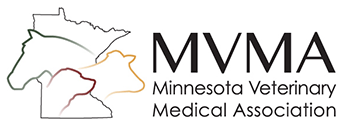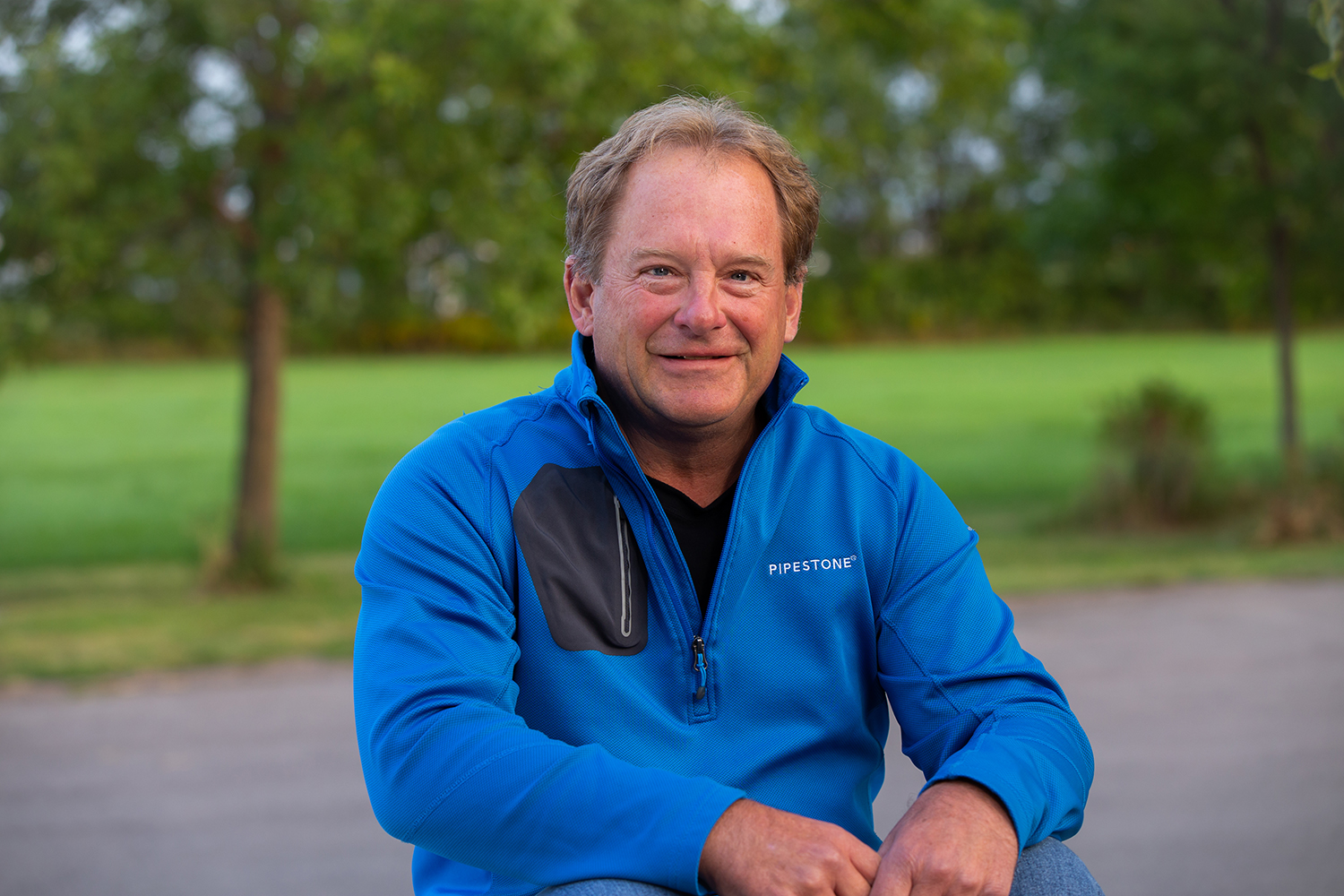- Membership
- Vet Techs
- Classifieds
- Education
- Get Involved
- Resources
- Annual Conference
Dr. Scott Dee's Work Leads to Novel AVMA Biosecurity PolicyBy Jenn Stromberg, MVMA Marketing & Communications Manager
An American Veterinary Medical Association (AVMA) policy on biosecurity was recently adopted thanks to the leadership of Dr. Scott Dee, Minnesota’s Alt Delegate to the AVMA. This novel policy has significant potential to expand awareness of effective, evidence-based biosecurity protocols originally developed for the swine industry—and pave the way for their application in other species. His work on this issue couldn’t be more timely, given the threat posed by avian influenza and other emerging diseases. A swine veterinarian and microbiologist, Dr. Dee has made a significant impact on the swine industry over the course of his career in industry, academia, and applied research. Recently retired, he became Minnesota’s Alternate Delegate to the AVMA last year, and he is now bringing his passion and expertise to the AVMA and working to broaden the impact of his research. Inspiration Dr. Scott Dee’s work on infectious disease control and transmission over the course of his career has dramatically advanced the practice of biosecurity in the swine industry. He published two papers in 2024 which documented the ability of evidence-based biosecurity programs to control porcine reproductive and respiratory syndrome virus (PRRSV) infection across a large-scale pork production system for an extended period of time. In a way, these papers showcase the culmination of his life’s work; the result of decades of experience as a swine practitioner, microbiologist, and researcher. But, what happens to research papers after they are published? Not wanting them to gather dust on the proverbial shelf, Dr. Dee was inspired to draft a resolution to bring to the AVMA House of Delegates with the hope that it could become policy. “If we can take this evidence-based approach and apply it across species, maybe we can do something bigger than just pigs and PRRS,” he thought. Process Dr. Dee drafted the resolution in a matter of minutes last fall. But there was much more to the effort than the writing, of course. First, he brought a draft resolution to MVMA leadership, where it was considered by our Board and given official sponsorship before sending it along to the AVMA. Then, he picked up the phone and spent time talking with other state delegates, other state VMAs, and relevant interest groups, from whom he received enthusiastic support. About a dozen co-sponsors signed on to the resolution, including the American Association of Avian Pathologists and the Feline Veterinary Medical Association. While there was some wordsmithing that happened as the resolution made its way through AVMA’s process (which is not unlike a state or federal legislative system), ultimately it passed unanimously when the House of Delegates met in January. Dr. Dee credits its simplicity, novelty, and timeliness for the resolution’s unanimous passage, leading to its adoption as AVMA policy. He was intentional about writing it in an inclusive manner; while the inspiration was pigs and PRRS, the goal was to make an impact across all species. In light of the avian flu crisis, biosecurity is an important topic to address in this moment. Impact So how does an AVMA policy make an impact? First, the act of adopting this policy sends the message that members need to get up to speed on biosecurity and understand its importance. As mentioned in the policy, all veterinarians across all species should become familiar with the science of biosecurity, follow an evidence-based approach to practice it in the field, and strive to bring answers to existing questions. Second, in adopting the policy, the AVMA board committed to developing and maintaining an educational web-based platform for AVMA members to learn about biosecurity as it applies to all species and pathogens. Dr. Dee expects that it will contain a library of publications, contacts, and resources, as well as tools for veterinarians to collaborate and share information and cases. He believes that this initiative will be helpful in addressing other animal diseases including avian influenza and predicts that we will see similar patterns between the H5N1 and PRRS viruses, which are very similar in size and form. Protocols that he developed for swine could be applied right now, at least to get started, and as the science moves forward protocols can be modified accordingly. MVMA plans to share more once the AVMA’s educational page on its website is live. For now, if you are interested in learning more or getting involved, you are welcome to reach out to Dr. Scott Dee at [email protected]. A Noteworthy Career Dr. Scott Dee’s love of dogs inspired his early ambition to become a veterinarian, a career he remembers feeling drawn to by the age of 5. He grew up in the city of Rochester without any background in animal agriculture—until one fateful summer when he got an externship working on the research farm at the Mayo Clinic. It was a pivotal summer for him. At the Mayo, he was introduced to two things that would shape the trajectory of his career: working with animal populations—flocks and herds of chickens, pigs, and cattle—and research. While pursuing his DVM, he also received a Master’s in microbiology. He became fascinated by pigs and really liked the swine farmers and veterinarians he met. “I just thought pigs were really cool; how they interacted in a herd and how they spread disease from pig to pig.” As a microbiologist studying how bacteria and viruses move between animals, he saw an opportunity—and thus carved out a niche for himself. Dr. Dee started working as a swine practitioner after receiving his DVM from the University of Minnesota College of Veterinary Medicine in 1987. Shortly thereafter, a devastating disease emerged: PRRS, or Porcine Reproductive and Respiratory Syndrome, which causes reproductive failure and deadly pneumonia in pigs and currently costs the industry more than $1 billion annually. Experience with this new pathogen drove him to achieve his PhD in veterinary medicine from the U of M CVM and become board certified in microbiology through the American College of Veterinary Microbiologists. “I got swept up in the emergence of PRRS. My whole 37 years, in one shape or form, as a practitioner, a scientist, and research director, I’ve been battling this disease,” Dr. Dee shared. In 1999, Dr. Dee transitioned to academia and joined the UMN CVM faculty. During this time, he began to study indirect routes of disease transmission using the PRRS virus as a model. He designed experiments and discovered that the virus could be transmitted via fomites—trucks, coveralls, and supplies—and then showed how to neutralize those risks. He discovered that the virus could travel at least five miles through the air, and developed an air filtration protocol. He also learned that it could be transmitted through feed and developed protocols and additives to minimize transmission through that route. A final career transition in 2011 brought Dr. Dee to the research division at Pipestone Veterinary Services, where he served as Director of Discovery and Innovation at Pipestone Applied Research until his retirement in 2023. In this role, he was able to put his previous research to the test on a large scale. Using the biosecurity protocols he’d developed in laboratory experiments at the university, he and his team applied them across the Pipestone System of 75+ breeding herds and were able to keep the PRRSV incidence risk below 10% over the course of three years—something that had never been done before. For comparison, in the decade leading up to the research documented in his recently published papers, the annual incidence risk of PRRSV in sow farms managed by the same company averaged 33%, ranging from 20% to 50%. This was the research that his aforementioned 2024 papers were based on, ultimately inspiring the recently codified Biosecurity Policy of the AVMA. “To me, writing policy from science is a good way for the science to live on, as well as help transmit the message to the current and future generations,” Dr. Dee shared. And soon, under the guidance of the AVMA, this policy will result in the development of educational resources to benefit the veterinary profession, animals, and public health—making an impact on a large scale.
AVMA Policy on BiosecurityDiseases of animals can be transmitted in many ways, including direct and indirect oral, airborne, and vector-borne routes of transmission.
Because of these many risks, prevention of disease transmission through the practice of biosecurity is critical to protecting the health and welfare of all species.
To be effective, biosecurity programs should be based on scientific evidence and current best practice(s) as applicable.
The AVMA supports the protection of the health and welfare of animals through the practice of science-based biosecurity and encourages its members to become familiar with this approach.
|

